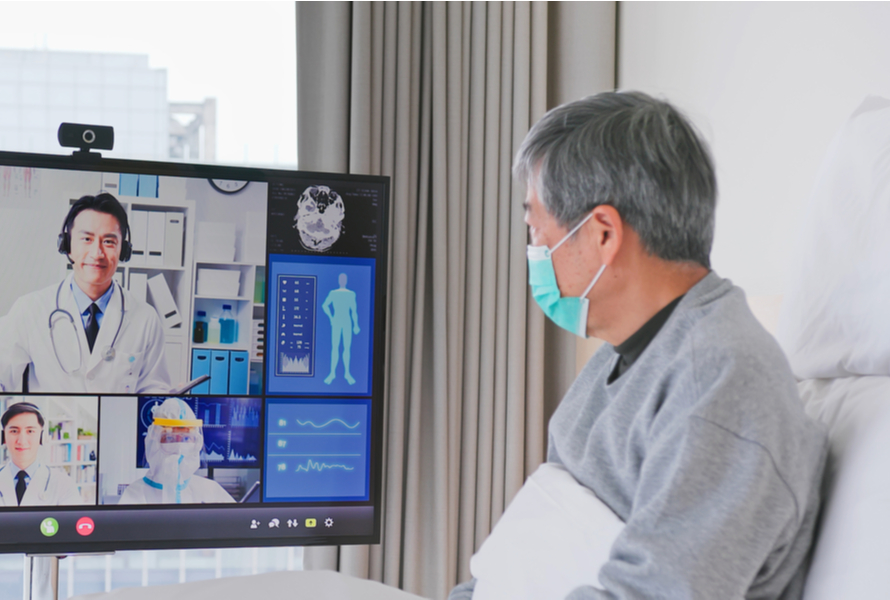Insights, Events and Videos
Ping An Business Case 2022
China's aging population — a challenge and an opportunity
By 2040, the number of people in China aged over 60 will be greater than the entire population of the United States, and close to the total of all those living in the European Union today. People aged over 60 is projected to reach 402mn by 2040, an increase of 138mn from 20221. This figure is approximately equivalent to the current populations of France and the United Kingdom combined.
China truly is the country of massive numbers, and its elderly comprise the fastest growing segment of its population. The percentage of people aged 60 or above is set to rise from 18.7% in 2020 to 28% in 20402. This substantial increase is anticipated to initiate an aging problem in China.
This demographic evolution presents challenges and opportunities for authorities and businesses alike. Consequently, one of the largest financial companies in the world is abandoning its traditional insurance business model and transforming itself into a health and elderly-care financial services provider.
Essentially, Ping An Insurance (Group) of China is building a new healthcare ecosystem to meet China’s developing needs and alleviate China's aging population crisis. This case study looks at that ecosystem and how it will operate.
Insurance + Service = 9073
Many old people in the west spend the closing years of their lives in institutions, and that region is experiencing a crisis in senior care home provision and funding3.
In the US, the National Academies of Sciences, Engineering and Medicine published a landmark report in 20224 arguing for comprehensive changes to the industry. Its suggestions included the construction of smaller facilities that would more closely resemble family homes. That, as it turns out, is where China is heading to solve its elderly-care challenges.
In China, growing old has come to be associated with the numbers “9073”, which describe the government’s senior-care model. This model aims for 90 per cent of the elderly to be cared for at home, 7 per cent in community care and just 3 per cent in elderly-living institutions. However, the provision of home-based care services for China's aging population is currently fragmented, resulting in substantial disparities in the quality of care and service provided. Consequently, the overall effectiveness of efforts to address the aging problem in China is limited.
Ping An aims to support the 9073 policy for China's aging population with a new ecosystem that provides the elderly with “butler” home visits and the personal attention of doctors. By combining the advantages of Ping An's healthcare ecosystem with the high quality of its elderly-care resources, the new service integrates insurance protection with professional care to create a closed loop "insurance + service" solution that is both convenient and affordable.
Reduced risk, safer family
In short, Ping An's innovative homecare service system is a one-stop solution that provides comfort for the elderly and peace of mind for their children whilst saving the entire family valuable time and unnecessary expense. This initiative seizes the opportunity presented by the challenges posed by China's aging population crisis.
What’s more, the online elderly-care concierge service operates around the clock and is supported by a smart risk system that connects to devices that monitor the health of the elderly person being supported. When the system detects anomalies in their health, it issues an early warning so that the dedicated butler service can respond quickly and notify emergency services and the family doctor.
The system keeps track of seven important vital signs, including blood sugar level, blood pressure, heart rate, breathing rate and blood oxygen level. It can also monitor 13 behavioural outcomes, such as accidental falls, sleep quality and daily exercise, to ensure timely detection of problems and rescue when needed. And the system can check in real time for nine possible environmental risks at the user’s home. These include air quality, signs of gas leakage and excessive smoke concentration.
Ping An’s home-based elderly-care service relies on the Ping An Good Doctor resource’s medical team of about 2,000 doctors, who are available to provide 24-hour remote medical diagnosis and treatment. For customers with offline medical needs, Ping An can fast-track medical escort services to tertiary hospitals.
Supported by a team of medical experts and the concierge platform, the monitoring system provides users with a comprehensive well-being assessment that considers 10 important factors, including health, diet and lifestyle. The assessment results are evaluated by the experts to develop a personalized and comprehensive care plan for each individual, with the ultimate goal of maximizing the impact in addressing the aging problem in China.
Preparing for the Future of the Aging Population in China
Ping An is also expanding its business ecosystems of "finance + elderly care" and "finance + healthcare”, and is committed to providing its customers with professional financial advisor, family doctor and elderly-care concierge services that give them worry-free, time-saving and money-saving financial and healthcare service experiences.
As of September 30 last year, Ping An's healthcare services covered 187 Chinese cities, empowered more than 43,000 medical institutions, benefited approximately 1.12mn doctors and served 3.22mn patients with chronic diseases. Cumulative consultations on the Ping An Good Doctor platform have reached nearly 1.2bn people so far, and the company has forged co-operation deals with over 4,000 hospitals and 189,000 pharmacies.
In a recent interview, Peter Ma, the founder of Ping An, emphasized the universal need for healthcare and senior care, stating that it is a necessity for everyone. The Ping An business model is opening up these two sectors to provide customers with a broader range of more comprehensive products and services and aiming to meet the changing needs of China's population, all while providing sustainable returns to shareholders and promising interesting challenges for its valued employees.
A broad customer base meets deep resources
The keys to the success of HMO-managed care are a huge customer base resulting from the rising aging population in China, and the ability to leverage medical resources to effectively control service quality and costs. Ping An’s confidence in implementing its health ecosystem strategy stems from its large customer base and leading medical resources.
Ping An has been working toward two major goals in the Chinese health industry: firstly, to provide one-stop health services, mobilising the 227mn customers in the main financial business and the 423mn users of Ping An Good Doctor to build the largest online health platform; and secondly, to access medical resources by closely cooperating with hospitals and medical institutions to integrate resources across the country through Ping An’s health technology.
By linking high-quality offline medical resources, Ping An has gained a competitive edge in integrated online and offline health services, mitigating China's aging population health crisis. By the end of 2021 it had achieved this by collaborating with more than 40,000 in-house doctors and contracted external doctors in China, and forming partnerships with over 10,000 hospitals (including 99 per cent of Tier 1 hospitals and all China’s top 100 hospitals), about 96,000 healthcare management institutions and 202,000 pharmacies (around a third of all pharmacies in the country).
In 2021, Ping An invested approximately Rmb48.2bn in the New Founder Group to strengthen its offline health ecosystem. The medical sector of Peking University under the New Founder Group is leading the industry in terms of offline industry scale (including the world-class Peking University International Hospital).
Integrated finance + health services
Ma Mingzhe, chairman of Ping An, says that while finance is central to Ping An’s prospects today, healthcare services will determine the group’s future.
The health ecosystem strategy is closely integrated with Ping An’s main financial business, achieving synergistic effects. In 2021, nearly 63 per cent of Ping An’s more than 227mn individual customers chose the services provided by the health ecosystem, with 3.3 contracts per customer and Rmb40,000 in assets under management per customer — figures that are 1.6 times and three times higher, respectively, than those of the customers who did not use health ecosystem services.
Capturing strong consumer demand in finance and healthcare, Ping An is actively building an “integrated finance + health services” business model in China. As its HMO model of providing health services takes shape, this strategic implementation is progressively yielding enhanced investment value while while making significant contributions to addressing the needs of the aging population in China.
References
1. https://www.who.int/china/health-topics/ageing
2. https://www.scmp.com/economy/china-economy/article/3157385/chinas-ageing-population-long-term-reality-and-its-silver
3. https://www.thelancet.com/journals/lancet/article/PIIS0140-6736(14)60463-3/fulltext
4. https://www.nytimes.com/2022/04/14/opinion/nursing-homes-crisis.html



